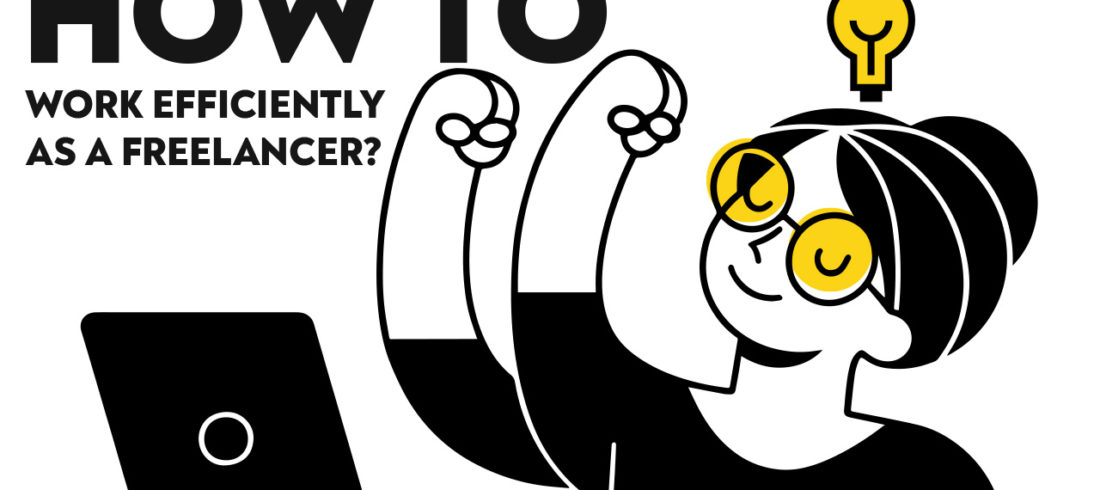
So, you have made your decision. You want to become your own boss and start freelancing. Maybe you want to do it as a part-time job, alongside studying, maybe you are looking for something that is full-time, yet flexible. Regardless, there will come a moment, when you will need to ask yourself the toughest question that every freelancer must encounter: how do I land my first project?
Maybe you have already tried and failed. Maybe you are yet to do that. So let’s start with a hard-to-swallow pill: be prepared to be frustrated. Be prepared for long days of empty inbox. Be prepared for moments of self-doubt.
After all, you are competing in a globalized economy, with people all around the world, where literally millions of freelancers compete against each other to land a project. Freelancing is hard. But at the same time, once you land a great project, there is nothing more rewarding. The flexibility and freedom you get are something that you can only experience freelancing. We can’t promise that after reading this article you will instantly land a fantastic commision. But we can promise to keep you well ahead of many others that are in the same place as you. We don’t want to give you a few truisms, but practical tips based on our actual experience. So you save time by not making the same mistakes we have. Because you only have one time.

What about experience?
Experience is something that beginning freelancers worry about a lot. After all, that’s where most of your value as a contractor comes from. It often feels like a closed circle, where you need to have experience to gain experience. But worry not, because there are some ways to break the cycle. And once you land your first project that you can put in your portfolio, it all becomes a lot easier. So, here are two easy ways to generate experience, even if you feel like you don’t have any:
Look for experience in unexpected places. What is undoubtedly true, you have SOME experience in some field, or there is something you enjoy doing and feel good at. And now it is just a matter of utilizing it in a way that is attractive to someone. So, find your desired field and identify the niche you have some experience in. Let’s say you want to become a copywriter and you like skateboarding. Look for a project that involves both of those elements, like “writing SEO-focused articles for a skateboarding blog”. That way you can counterbalance your relative inexperience in the field by expertise in the subject.
If you have no experience, create it. Want to kickstart a career in SEO optimization? Use free resources available on the internet to learn it, write an article about something you are passionate about, publish it on the internet, and do so until you are satisfied with the outcome. Now you have something to showcase to a potential client and prove your skills. There is only one way of getting good at something – doing it.

Landing your first job – where to search?
Now you have created work experience seemingly from nothing! Time to move on to the next part – actually getting your first job.
Let’s start with the part that might not be obvious to some – where to look for a job. For the beginners there are three main ways to find your first project: friends and family, freelancing services, and finally, cold mailing. Each one of those has some pros and cons. So, let’s take a closer look at each, so you can decide what will work the best for you.
First, friends and family. For every small business, its first customers almost always come from this group. And it is from this group that you are most likely to receive an actual project. Ask around and find out! You would be surprised how many of those around you might need your freelancing services.
The good side of working for your close ones is that they will often be far more understanding than your actual clients. They will forgive you small mistakes, and the work environment in general tends to be more pleasant.
But doing projects for friends and family does have its downsides. Most importantly, it can simply damage good relationships. A freelancer-client relationship is a highly specific one, and quite frankly, it is not always the best to have your friend also be your client. This can easily lead to frustration on both sides, and consequently… just simply ruin your friendships!
Another great way to find new clients is by dedicated internet platforms. Online services such as UpWork or Fiverr are very popular among employers. There you will find hundreds of projects just waiting for you to apply! And some of them might even lead to finding long-time clients. Some certainly have made a career using freelancing platforms.
Additionally, the “competition” model of some of those platforms, where simply the best proposal wins is a great way to build up Your portfolio. Even if Your project doesn’t get chosen, You still have something done to show in the future.
What are the cons? First of all, those sites aren’t free, so some percentage will be deducted from your rate. Apart from that, you are quite literally competing with people all around the world – from countries where the same amount of money has much bigger buying power, encouraging you to lower your rates to be able to stay competitive.
The last way of getting clients is often referred to as cold mailing (often referred to as “cold DMing”, as it can also be done on platforms such as LinkedIn), and involves personally messaging a potential contact you want to get, in order to gain a lead. Cold mailing involves a little bit of finesse, as GDPR regulations banned making sales offers to people who have not consented to receive them. Modern cold mailing is all about interesting a person with your business without actually making a sales offer.
This method is great for meeting new clients, as people are generally more keen to respond to personalized messages. According to a 2017 survey, as many as half of the responding freelancers used personal messages on LinkedIn as a way to find new clients. However, many might perceive cold messages as a form of spam in their inbox, so a proportionally small percentage of people will eventually respond (usually that’s something around 10%), and only a few will actually become Your business clients. Leads collected by cold mailing are among the most valuable ones for beginners, as you will receive full wage and will be fully in control of the whole project, in a way minimizing the downsides of the two previous methods.

Creating a convincing offer
So, you have your method of choice. Regardless of the one you choose, you always need a convincing offer that will make a given person actually want to use your services. Of course, depending on who you are preparing the proposal for, some things will differ. When writing one for a friend, the tone can be less formal, etc. But there are a few general rules that you can apply regardless.
First of all, always have the perspective of the other side in mind. Try to put yourself in the shoes of the person who reads your offer. Why should they go for you and not another freelancer? What value will you bring into the project? Maybe it is your expertise in the field. Perhaps you have some experience in similar projects. Or maybe, your inexperience leads to a better rate you can offer them? Run a few scenarios in your head. Think of your imaginary, more experienced competition. What is your leverage?
Don’t be afraid to brag. Bragging is frowned upon in our culture, and studies consistently show that most people feel that they are underqualified for a job even if they have all the qualifications needed. If you think that there is ANY certification, course or experience you have, that is somehow relevant, include it in your portfolio. Do a free Google course. Put it in. You know how to use the Office Suite? Great, put that in. Don’t underestimate yourself, and never assume that some experience will be taken for granted.
You need to create value. There is an old meme, which shows a McDonald’s cashier saying “I run financial operations for a multi-million dollar company”. But there is a lesson to be learned here. Always present your experience as value creation.
Imagine the following scenario: your friend runs a small business, and you have helped them with social media, driving followers count from 250 to 900. And they now have x new clients from Instagram.
There are two ways to present this information in your proposal: “I helped my friend get a few hundred followers” or “I have grown the number of organic followers by 360% for a local small company, which generated x sales leads, converting to a profit of x amount”. See the difference? Your potential client will. What creating a convincing proposal is all about, is finding an angle that you can present your previous experiences in to showcase, that choosing your services will lead to the best long-term results.
Conclusion
And now, the rest is up to you. Find your niche, find a client, send an offer, repeat. You have all the knowledge you need to get your first ever project. We know it might be frustrating, we know it might take time – believe us, we have been there. But remember, it’s a marathon, not a sprint. And after reading this guide, you are already way ahead of your competition.








